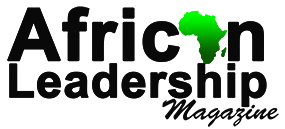One of the critical factors that hinders development is the lack of reliable and efficient power supply. The relationship between power supply and economic growth in Africa is both intricate and vital, with electricity playing a key role in driving economic expansion and overall progress.
With a rapidly growing population and economy, Africa struggles to provide reliable electricity to its citizens. The power sector is marked by inadequate generation capacity, inefficient transmission and distribution networks, limited access to electricity, heavy reliance on fossil fuels, and a lack of investment. The continent’s total installed power generation capacity stands at approximately 250 GW—less than 10% of the world’s total.
READ ALSO: Hydropower vs. Solar: What’s Africa’s Best Bet for a Green Future?
Inefficiencies in transmission and distribution result in substantial power losses and frequent outages. Africa’s average transmission and distribution losses hover around 20%, compared to 5-10% in developed countries. Additionally, more than 600 million Africans lack access to electricity, according to the International Energy Agency (IEA). This deficiency not only hampers economic growth but also affects the quality of life for millions.
Africa’s power sector remains heavily dependent on fossil fuels, particularly coal and gas, making it vulnerable to price fluctuations and supply disruptions while contributing to climate change. Significant investment is required to bridge the infrastructure gap and meet the growing demand. However, attracting private sector investment remains a challenge due to regulatory and financial barriers.
Despite these hurdles, there are opportunities for growth. Africa has vast renewable energy resources, particularly solar and wind power, which can be harnessed to provide clean and sustainable electricity. Private sector participation could bring much-needed investment, expertise, and efficiency. Additionally, regional cooperation and integration can facilitate resource sharing, technical expertise, and risk mitigation.
Regional disparities in power supply remain pronounced. North Africa has a relatively developed power sector, with high electricity access rates. Southern Africa has significant installed capacity but faces transmission and distribution inefficiencies. East Africa has made notable progress in expanding electricity access, especially in Kenya and Ethiopia. However, West Africa continues to struggle with unreliable electricity provision.
Addressing Africa’s power supply challenges requires a comprehensive approach that considers the unique circumstances of each region. Investment in renewables, improved efficiency, and strengthened regional collaboration will be key to transforming the continent’s power sector.
The Impact of Power Supply on Economic Growth
Reliable electricity is a fundamental driver of economic growth. It enables businesses to operate efficiently, boosts productivity, and attracts investment. Conversely, inadequate power supply leads to reduced productivity, increased operational costs, and deterred investment. Frequent outages and shortages result in lost economic output and decreased competitiveness. Businesses and households often resort to costly and inefficient alternatives, such as diesel generators, further increasing their financial burden.
A stable power supply fosters industrial growth, enhances technological advancement, and improves the overall business environment. Without it, Africa risks stagnation and a continued reliance on external assistance for economic development.
Success Stories: Power Supply and Economic Growth in Africa
Despite challenges, some African countries have made remarkable progress in improving power supply and driving economic growth. Rwanda, for instance, has significantly invested in renewable energy, particularly solar and hydroelectric power, with an ambitious target of achieving universal electricity access by 2024. Kenya has successfully developed geothermal energy and expanded its transmission infrastructure. South Africa has made significant investments in wind and solar power while implementing policies to enhance energy efficiency.
These examples demonstrate that with strategic planning, investment, and policy implementation, Africa can overcome its power challenges and foster economic growth.
While Africa’s power sector faces considerable obstacles, opportunities abound. The continent is rich in renewable energy resources, including solar, wind, hydroelectric, and geothermal power. Encouraging private sector participation can unlock investment, expertise, and innovation. Public-private partnerships (PPPs) and independent power producer (IPP) programmes can play a crucial role in accelerating progress.
Regional cooperation is another key solution. Organisations such as the African Union and the Economic Community of West African States (ECOWAS) can facilitate cross-border electricity trade and integration. Energy efficiency measures, such as adopting energy-efficient lighting, appliances, and building insulation, can also help manage demand and optimise existing resources.
The link between power supply and economic growth in Africa is undeniable. While the challenges are substantial, so are the opportunities. By investing in renewable energy, fostering private sector engagement, promoting regional cooperation, and improving energy efficiency, Africa can transform its power sector and unlock sustainable economic growth. It is imperative for governments, investors, and regional organisations to collaborate in implementing these solutions, ensuring a brighter and more prosperous future for the continent.




